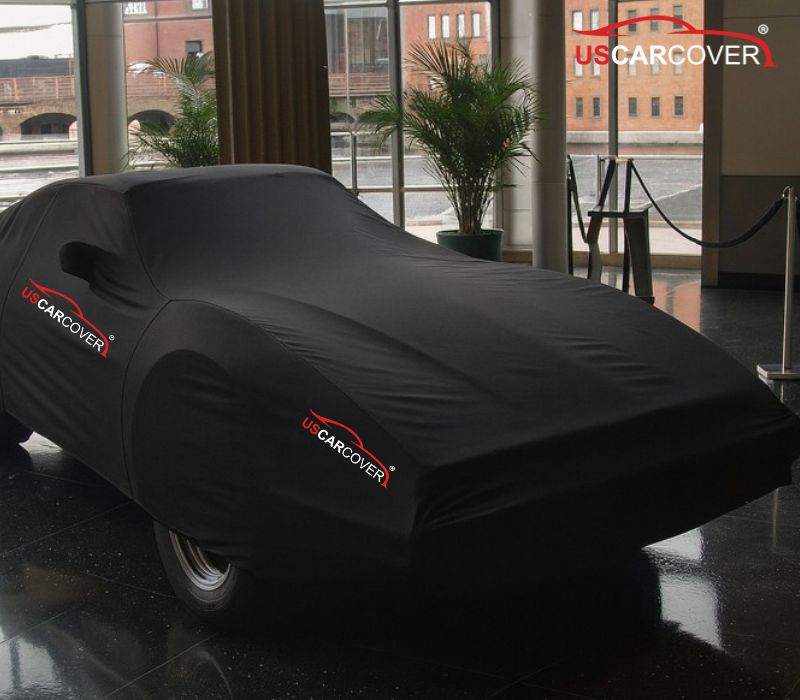
The Bricklin SV-1 is a rare two-seat sports car from 1974 to 1975, famous for its dramatic gullwing doors. The entire body of a Bricklin is made from composite panels where the color comes from an acrylic layer bonded to fiberglass. This construction is the car’s signature, but it is also the owner’s pain point: acrylic can fade and craze when it is exposed to intense sunlight, heat, and harsh contaminants. Many owners note that UV rays can penetrate the acrylic surface and gradually weaken the resin bond to the fiberglass. The result is a gelcoat surface that oxidizes, turns dull, and may crack over time. To preserve the exterior of a Bricklin, keep the color bright, and maintain durability, many owners focus on a simple protective solution: a car cover. A quality cover helps extend the life of the finish, blocks UV, and reduces light scratches, dust, and weather damage, keeping the car looking its best longer.
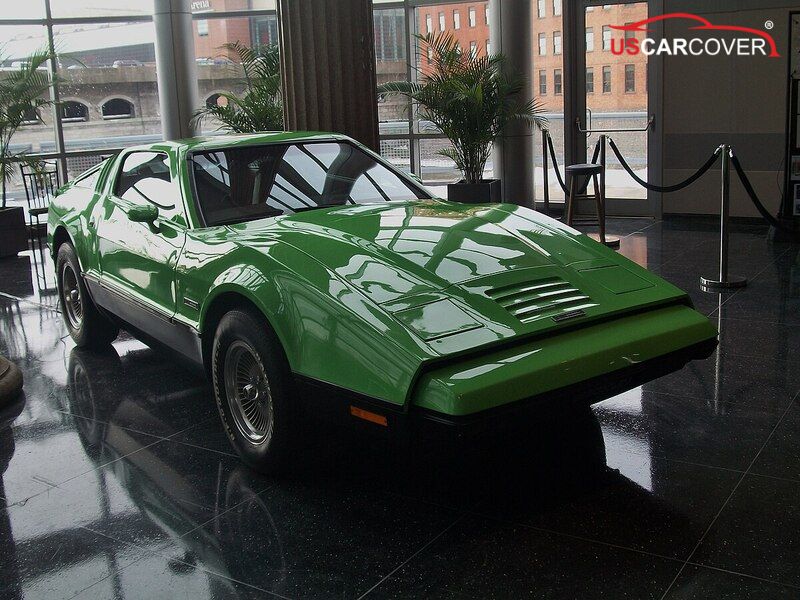
Related Articles: Bentley car cover: luxury, quality, finesse even while the car is covered
Overview of the Bricklin
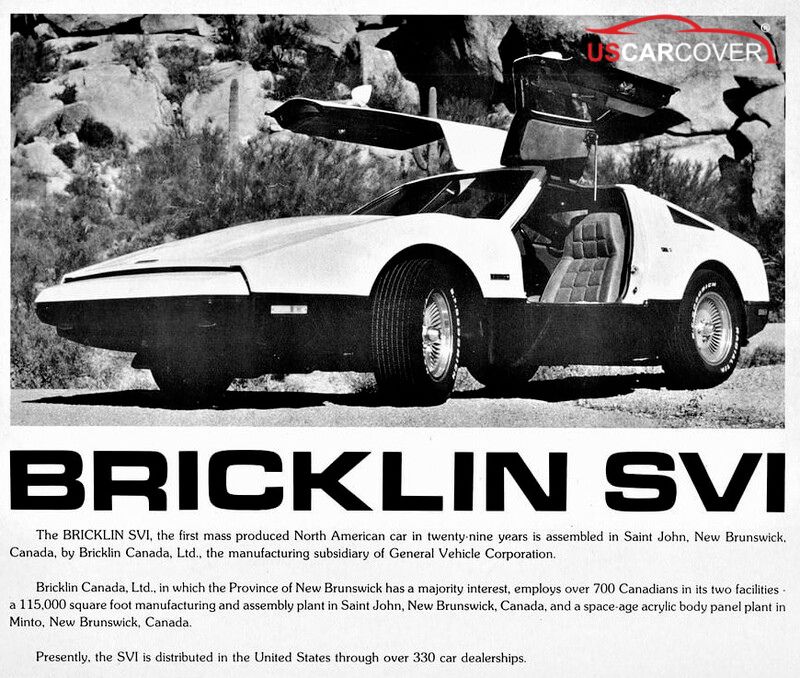
The Bricklin SV-1 was the vision of American entrepreneur Malcolm Bricklin, introduced with the bold idea of a “Safety Vehicle 1” in the 1970s. The breakthrough was a body made from color-impregnated acrylic resin sheets bonded over a fiberglass core. Because color is integral to the material, the car does not rely on a conventional paint layer sprayed on top. The upside is a deep, glossy look right out of the mold. The downside is that acrylic can be sensitive to heat buildup and UV exposure. Prolonged high heat can cause blisters or warping, and UV can slowly degrade the polyester bond between the acrylic skin and the fiberglass beneath. During production, the brand had to contend with these realities as they refined materials and methods. Over decades of use, owners have also reported issues like crazing, flaking, and fading if the car sits in harsh sunlight. A good car cover is a straightforward way to cut down on those risks, both outdoors and in carports or open garages.
Related Articles: Bentley car cover: luxury, quality, finesse even while the car is covered
What UV Rays Are and Why They Are Harmful
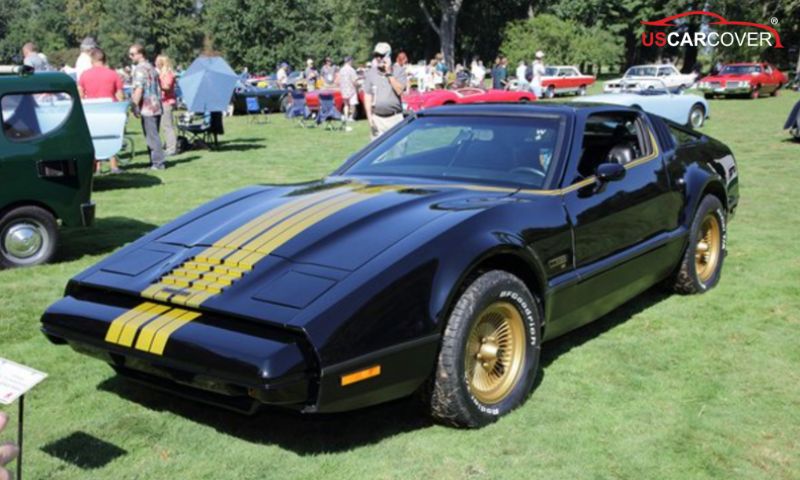
Ultraviolet, or UV, light has shorter wavelengths and higher energy than visible light. Sunlight is rich in UVA and UVB, both of which are invisible to our eyes but extremely active in breaking down plastics, resins, and clear coatings. On vehicles, UV is the number one enemy of exterior finishes and exposed plastics. Over time, the energy in UV light breaks molecular bonds in polymers and resins. What you see is oxidation: a surface that once looked wet and glossy becomes chalky, hazy, and rough to the touch. Color fades and loses depth, edges look tired, and the overall finish loses that crisp, reflective pop. The same UV exposure also ages interior plastics and vinyl, dries out rubber seals, and can fade fabrics. If you routinely park outside, especially in high-sun states, you will notice this aging much faster than if you keep the car shaded and covered. A car cover that blocks or reflects UV light can significantly slow this process.
Related Articles: Avanti car cover: Will an anti static lining that reduces dust buildup keep the finish glossier in dusty winds and coastal climates
What Acrylic Color Is and What Happens Without UV Protection
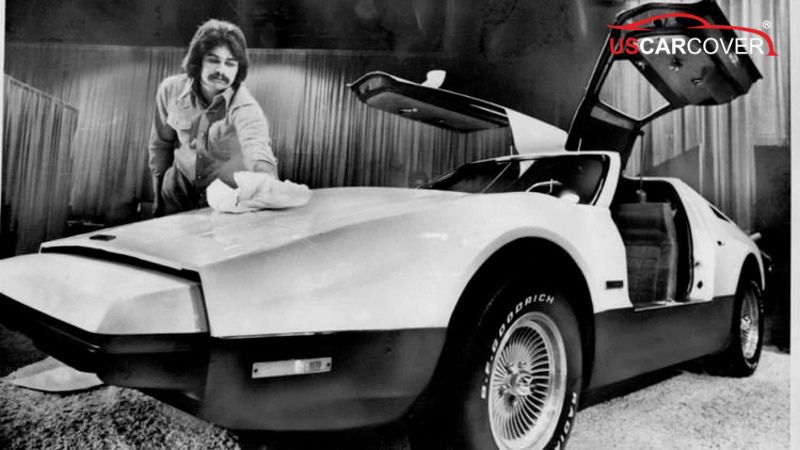
When we talk about “acrylic color” on a Bricklin, we mean the acrylic layer itself that brings the color and gloss to the panel. In classic and vintage contexts, acrylic finishes were popular for their bright, liquid look and ease of refinishing. The tradeoff is durability under the sun. Compared to modern two-stage paint systems with advanced UV inhibitors, older acrylic finishes tend to fade or chalk faster if they are left in direct sunlight. Over time, UV exposure depletes any protective additives in the surface, leaving it more vulnerable to oxidation. The glossy look dulls, the color shifts, and tiny surface cracks or crazing can develop. On a Bricklin , where the color is part of the panel construction, fading does not just spoil the look. It can signal that the upper layer is weakening, which risks more visible surface defects. A car cover dedicated to UV control is one of the simplest ways to reduce the sun’s impact so the acrylic retains its depth and clarity.
Related Articles: Austin-Healey Car Cover: Lightweight, UV resistant and durable
What Gelcoat Is and What Happens Without UV Protection
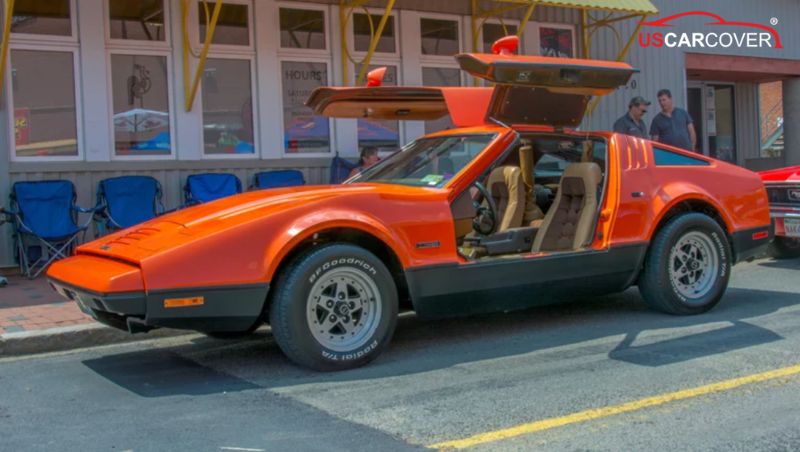
Gelcoat is the glossy outer resin layer applied over fiberglass parts. Think of it as the protective skin that provides shine, color uniformity, and a barrier against moisture and light abrasion. It is commonly used on boats and fiberglass-bodied vehicles for exactly these reasons. While gelcoat is formulated to be UV resistant, it is not immune. Constant sun weakens the resin structure and the pigments. The surface then oxidizes, appearing chalky and dull. In coastal or high-humidity environments, the process may speed up, and brightwork near gelcoat can show speckled spots if moisture or salt mist linger. For a Bricklin, preserving that gelcoat sheen is vital because it defines the car’s unusual, color-through finish. Regular waxing or a modern sealant adds a sacrificial layer that helps, but the largest difference comes from limiting UV in the first place with a high-quality car cover that stops or reflects sunlight and allows moisture underneath to vent.
Related Articles: Austin Car Cover - A U.S climate checklist what to use
Introducing the Types of Car Covers
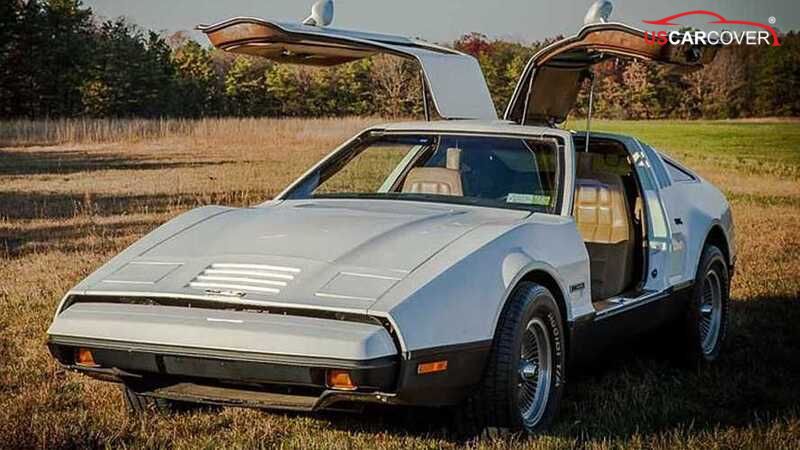
Indoor covers. These are lightweight and focus on dust protection and preventing light contact marks. They usually feature a soft inner surface like flannel or microfiber. Indoor covers are ideal for enclosed garages with minimal wind and no rain. They are easy to handle and quick to put on or remove. If you almost never park outdoors, an indoor-style cover may be sufficient.
Outdoor covers. All-weather covers are designed for sun, rain, wind, and temperature swings. Quality outdoor covers often use tightly woven polyester or similar fabrics with UV-reflective outer coatings. The exterior is typically a light, reflective color to reduce heat build-up. The best versions are waterproof yet breathable, so rain stays out but any moisture trapped under the cover can escape. Many outdoor covers include grommets or integrated straps to tie the cover down against wind. Multi-layer constructions are common, combining a weather-resistant outer skin with a soft inner liner to protect the finish.
Specialized solutions. There are ultra-thick multi-layer covers for extreme conditions, one-piece temporary plastic sheaths for short-term use, and inflatable indoor storage bubbles that isolate the car from dust and ambient humidity. For most Bricklin owners, the sweet spot is a breathable, UV-reflective outdoor cover with a very soft lining and a cut that matches the car closely.
Related Articles: BMW Car Cover Why a car in the garage still deteriorates and how to stop it at the source
Suggestions for Choosing a Car Cover Based on Your Needs
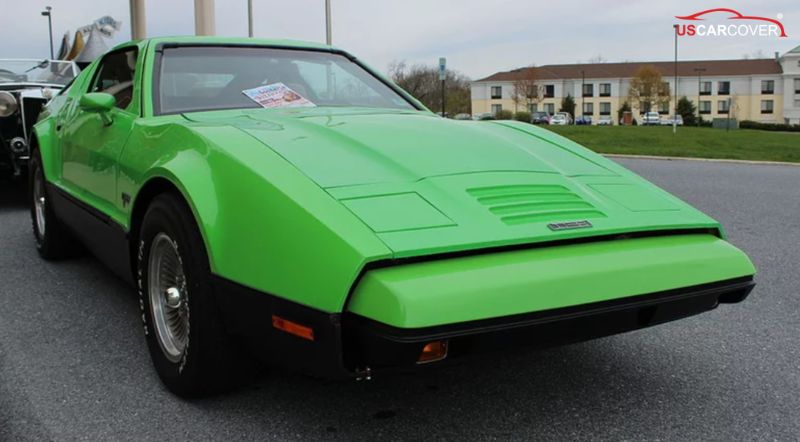
If you park outside frequently. Choose an outdoor car cover with proven UV blocking and a light, reflective exterior. Multi-layer fabrics help reduce heat and guard against rain and bird droppings. Breathability matters just as much as waterproofing, because trapped moisture under a sealed cover can create its own problems.
If you park mostly in a garage or under a roof. An indoor cover is usually enough to keep dust, pets, and accidental contact off the car. If you occasionally park under the sun, consider stepping up to a breathable outdoor cover so you do not have to switch back and forth.
If you live in high-sun climates. Prioritize strong UV reflection and fast drying. A lighter-colored or aluminized exterior helps keep panel temperatures down, which is especially helpful for acrylic and gelcoat surfaces.
If you live with frequent rain or snow. Look for robust water resistance with sealed seams, plus breathability to minimize condensation. Tie-down points are important so the cover does not shift in wind, which would rub against the finish.
If the car is stored long term or displayed. A custom-fit cover is a smart investment. It hugs the contours and reduces flapping. Add a wheel cable or lock for security if the car is stored in a shared space. Over months, a properly fitted, breathable cover is far kinder to a specialty finish than a loose, heavy tarp.
Related Articles: Auburn Car Cover 7 things 90% of owners overlook
Directions for Using and Protecting the Vehicle
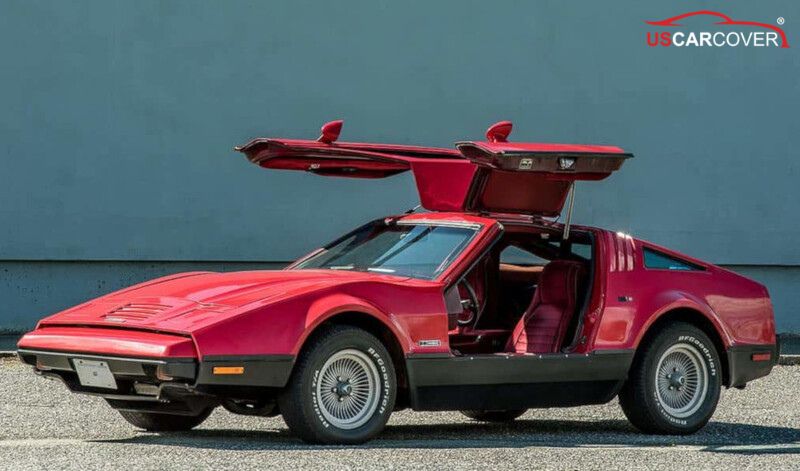
Clean and dry first. Before you cover the car, wash away grit and let it dry completely. Trapping dust or sand under a cover invites micro-scratches, especially on acrylic and gelcoat. Always cover a cool surface.
Do not cover a wet or hot car. If the car is damp from rain or washing, or still hot from a drive, allow it to dry and cool fully. Heat and moisture sealed under a cover can create odors, water spots, or encourage mildew on fabrics and trim.
Cover and remove with care. Start at the nose or roofline and work your way back, guiding the cover so it falls into place rather than dragging across edges. Avoid letting the cover touch the ground, where it can pick up grit. When removing, reverse the process and roll the cover so the clean inner face stays inside the roll.
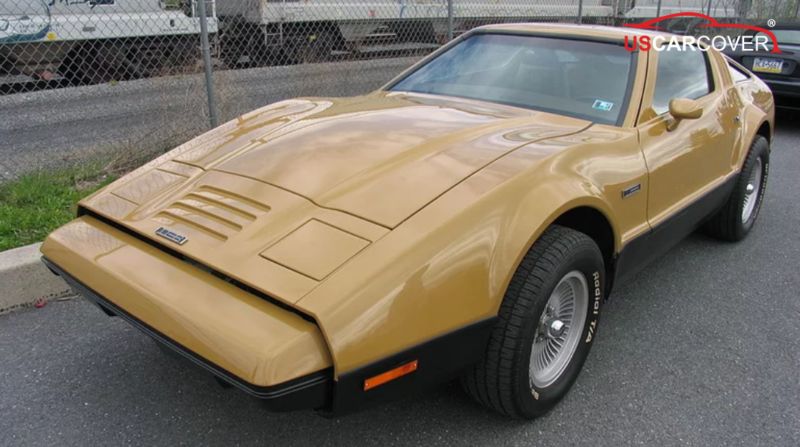
Secure for wind. Outdoors, use the built-in straps or grommets so the cover stays put. A flapping cover can scuff edges and trim. In windy or open areas, a soft underbody strap or a wheel cable lock keeps everything in place and discourages tampering.
Clean and maintain the cover. Shake off dust often and wash the cover periodically with a gentle cleaner. Rinse well and air-dry fully before storing. A dirty or damp cover is more likely to mark the finish and can develop odors if bagged wet.
Inspect routinely. Check the cover for wear, seam fatigue, or tears, and replace if it becomes rough or brittle. Inspect the car’s finish occasionally. Touch up minor defects and keep a protective wax or sealant on the surface, especially before long outdoor sits. The cover does the heavy lifting against the elements, while wax and sealants add a sacrificial layer and shine.
Applied together, these habits make the cover a genuine protective system rather than just a layer of fabric.
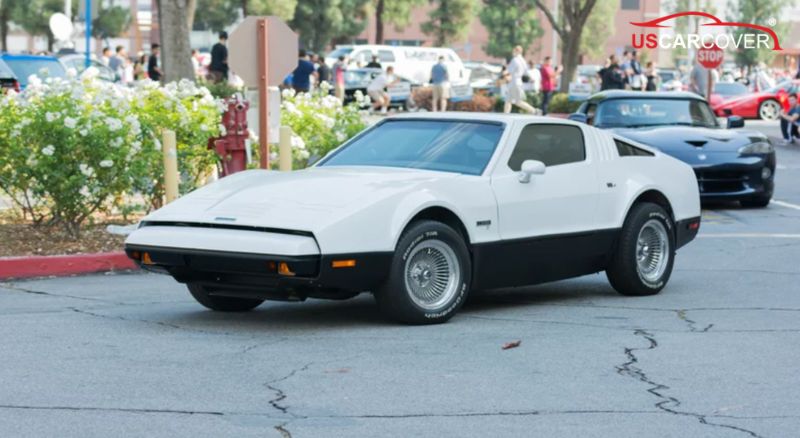
Related Articles: Aston Martin Car Cover - Why Every Aston Marin Owner Needs This Gift
Special Notes for the Bricklin
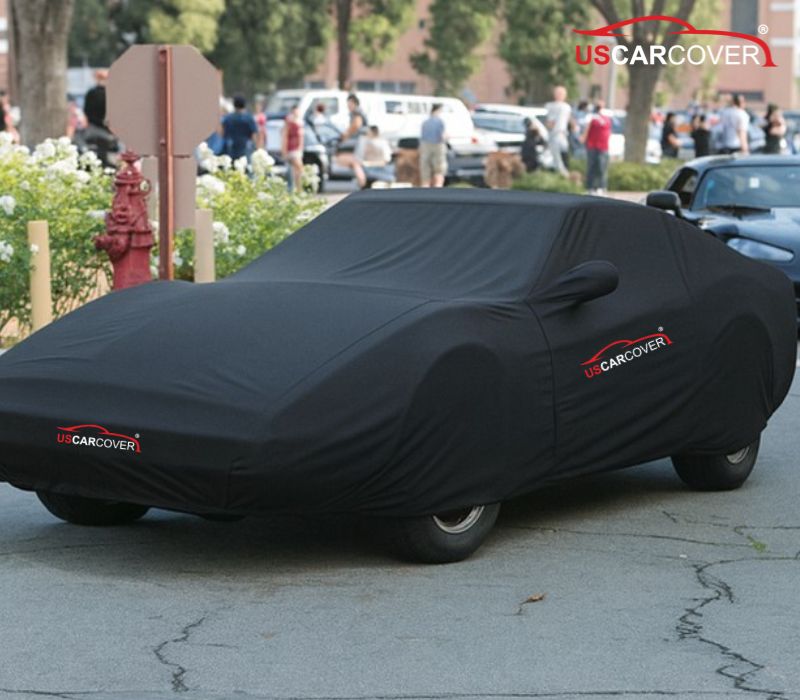
The Bricklin SV-1 uses fiberglass panels faced with acrylic or gelcoat, and it features gullwing doors and distinctive panel edges. Those details affect cover choice and fit. Select a car cover that is breathable and cut specifically for a Bricklin, with a very soft, light-colored inner lining. The light color makes it easier to spot dust so you can shake the lining clean before it touches the car again. A snug, custom pattern helps prevent flapping around the rear quarters and roof arches that can occur with generic universal covers. Make sure the cover includes allowance for the antenna if present, plus reinforced areas where edges or brightwork might otherwise rub. Because of the unique doors and body seams, handling the cover gently and keeping it clean pays off in fewer marks over the long term.
Protecting the exterior of a specialty car like the Bricklin is not optional if you care about preserving color and value. A modern, UV-focused car cover combined with correct handling is one of the most cost-effective ways to keep acrylic color and gelcoat glossy and true. You reduce direct sunlight exposure, limit dust and debris, prevent casual contact marks, and help regulate surface temperature. The payoff is simple and visible. With the right cover and a few easy routines, your Bricklin keeps its original character longer and continues to turn heads for the right reasons.
